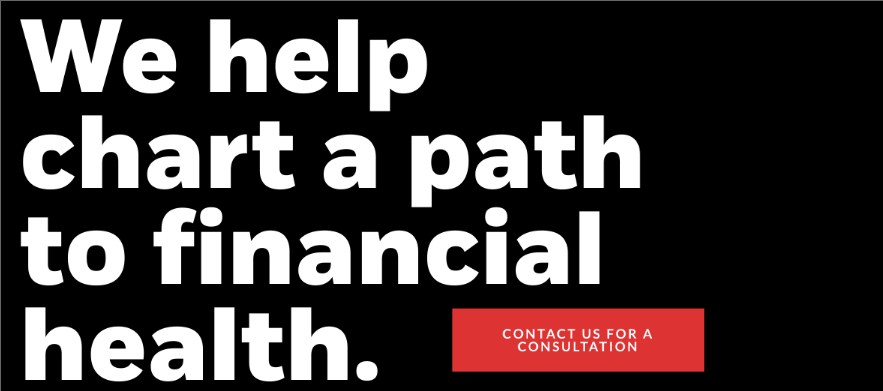How a Startup can use financial statements to Manage Cash Flow & avoid cash crunch
Running out of cash is a stressful worry for every startup or small business owner. Few situations are more daunting than sitting down to process payroll only to realize that you need more money on hand than you anticipated.
While cash flow crises can strike in any economic climate, the risk is heightened during times of uncertainty when your income may fluctuate more than expected. In the current environment, it’s crucial to understand your current cash position and its likely trajectory clearly.
To take control of your cash flow, you need two key elements: accurate financial statements and the knowledge to interpret them effectively. Ensuring accurate financial statements is a straightforward process: you must maintain accurate books (and if you currently don’t, Huckabee CPA can assist you).
The empowerment that comes from interpreting these statements can boost your confidence in making informed decisions. As for gaining the expertise to utilize those statements effectively, that’s what we’re here to discuss.
 Understanding the Income Statement
Understanding the Income Statement
First, let’s take a step back. Your company tracks its finances using either the accrual or cash basis method. In the accrual method, you record income and expenses when a service is delivered. For example, a business might sell with net-60 terms and receive payment on day 58. In their records, the transaction is added as income the day the deal is signed, although the company will have the money in the bank nearly two months later. In contrast, cash-based accounting recognizes revenue when the cash is received in your bank account.
Accrual accounting offers numerous benefits, one of which is visibility into the health of your business through your income statement (also known as a profit and loss statement). Your income statement reveals where and when you’re generating revenue over a specific period and where and when you’re committed to spending it. You can see how many sales you’re making, how frequently, and for what amounts, which might be less evident if you were solely looking at cash deposits. You also gain insights into your business’s purchases, eliminating surprises when a bill comes due.
However, the income statement doesn’t provide information on how much money you have at a particular time. It shows that you generated $10,000 in income from a project last week, but it does not show when the money will be received or how much cash you currently have in the bank. Assuming that $10,000 is in your cash account, you may make spending decisions that lead to a cash crunch if income is still an outstanding receivable.
This is where the cash flow statement comes into play.
What is a Cash Flow Statement?
The cash flow statement clearly shows how much cash you had at the beginning and end of a certain period (which could be monthly, quarterly, yearly, etc.). The amount you finished with, i.e., the bottom line, represents what you have in the bank. However, looking at the bottom line only tells part of the story. You need to examine the numbers that contribute to it carefully.
A cash flow statement has three main sections: investing activities, financing activities, and operations activities.
Cash flow from investing activities is related to your company’s investments. You usually spend money on growth (sometimes called the capital expenditures section). Examples can include research and development, real estate acquisitions, and other asset purchases. It’s important to remember that this is not money that others are investing in your company—that’s covered in the next section.
Cash flow from financing activities represents money invested in your company by others. For example, if you take out a bank loan, that money is recorded here. While the financing section will likely reflect your most significant influxes of cash, it will also likely be infrequent. After all, you don’t typically take out loans every other month.
Cash flow from operating activities is the money your company makes (or doesn’t) during normal business operations. This is the money from client payments minus the money required to keep everything running. From managing your business and understanding your day-to-day cash position, operations income is critical to monitor.
For some small and medium businesses, operations income can vary widely from month to month based on the timing of client payments and expenses. Keeping a close eye on this part of your cash flow statement allows you to track precisely how much you gain or lose in a given month – and whether it aligns with your expectations. You’ll want to investigate variances to identify cash flow risks that could result in a cash crunch.
With the cash flow statement, you know how much money you have – but not how much you will have. For that, we turn to the balance sheet.
What is a Balance Sheet?
Going back to our earlier example sale, let’s say you delivered that $10,000 project, which is recorded as income for this month, and you have net 30 payment terms. That $10,000 isn’t reflected in your cash flow statement because you still need to get the money. However, on your balance sheet, it’s listed as an asset in your accounts receivable. You know to expect it in your bank account within the next 30 days (unless your customers don’t pay – but that’s a different problem).
Now, let’s consider a vendor purchase of $2,000 with net 30 payment terms. You still need to pay, so that money is still in your bank account. However, your balance sheet reflects this purchase. It’s crucial to remember that even though you technically still have that cash, it’s going to be paid out in the next 30 days. Therefore, if you’re thinking about making another purchase, it’s wise not to include that $2,000 in your calculations of available funds.
Conclusion
By using the three financial statements together – the income statement, cash flow statement, and balance sheet – you can keep track of your actual cash position and projected changes and avoid setting yourself up for any accidental overdrafts. In the current economic climate, it’s more important than ever to have accurate, up-to-date books and know how to leverage them effectively to guide your business forward. If you have any questions about financial reporting for your company or need help creating monthly financial statements feel free to contact Huckabee CPA for a free consultation.











